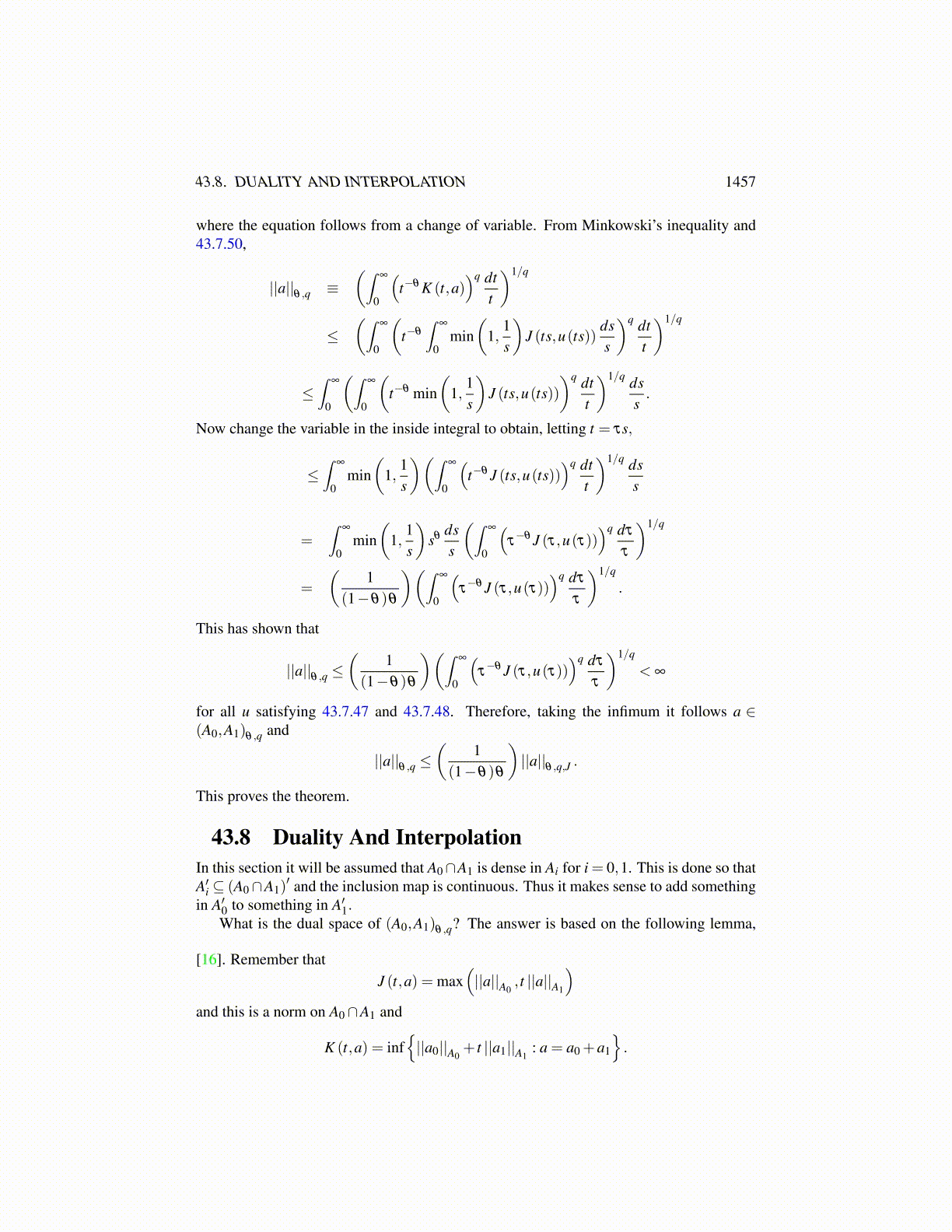
43.7. THE J METHOD 1457
Proof: Begin with a ∈ (A0,A1)θ ,q . Thus
||a||qθ ,q =
∫∞
0
(t−θ K (t,a)
)q dtt< ∞ (43.7.43)
and it is necessary to produce u(t) as described above,
a =∫
∞
0u(t)
dtt
where∫
∞
0
(t−θ J (t,u(t))
)q dtt< ∞.
From 43.7.43, limt→0+ K (t,a) = 0 since t→ K (t,a) is nondecreasing and so if its limit ispositive, the integrand would have a non integrable singularity like t−θq−1. Next considerwhat happens to K(t,a)
t as t→ ∞.
Claim: t→ K(t,a)t is decreasing.
Proof of the claim: Choose a0 ∈ A0 and a1 ∈ A1 such that a0 +a1 = a and
K (t,a)+ εt > ||a0||A0+ t ||a1||A1
let s > t. Then
K (t,a)+ tεt
≥||a0||A0
+ t ||a1||A1
t≥||a0||A0
+ s ||a1||A1
s≥ K (s,a)
s.
Since ε is arbitrary, this proves the claim.Let r ≡ limt→∞
K(t,a)t . Is r = 0? Suppose to the contrary that r > 0. Then the integrand
of 43.7.43, is at least as large as
t−θqK (t,a)q−1 K (t,a)t≥ t−θqK (t,a)q−1 r
≥ t−θq (tr)q−1 r ≥ rqtq(1−θ)−1
whose integral is infinite. Therefore, r = 0.Lemma 43.7.3, implies there exist ui ∈ A0∩A1 such that a = ∑
∞i=−∞ ui, the convergence
taking place in A0 +A1with the inequality of that Lemma holding,
J(2i,ui
)≤ 3(1+ ε)K
(2i,a
).
For i an integer and t ∈ [2i−1,2i), let
u(t)≡ ui/ ln2.
Then
a =∞
∑i=−∞
ui =∫
∞
0u(t)
dtt. (43.7.44)